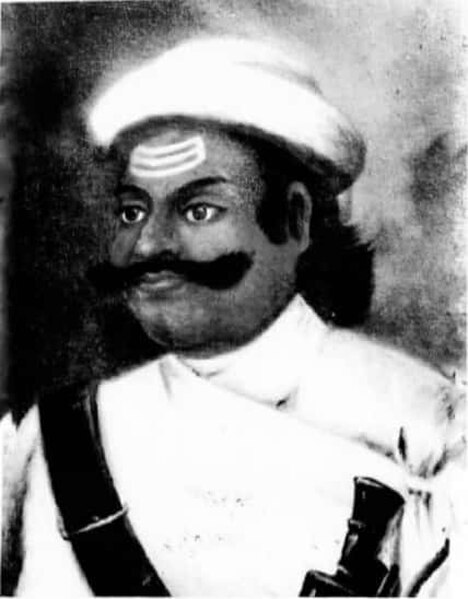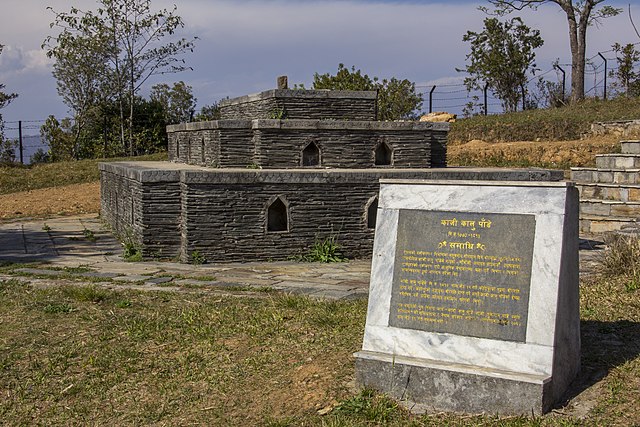The Pande family or Pande dynasty was a Rajput-Chhetri political family that directly ruled Nepali administration affairs from the 16th century to 19th century as Mulkaji and Mukhtiyar. This dynasty/family was one of the four noble families to be involved in active politics of Nepal together with Shah dynasty, Basnyat family and Thapa dynasty before rise of Rana dynasty. Pande dynasty is the oldest noble family to hold the title of Kaji. This family was decimated from political power in 1843 CE in the political massacre by Prime Minister Mathabar Singh Thapa as a revenge for his uncle Bhimsen's death in 1839.
Bamshidhar Kalu Pande, Kaji of Gorkha and the famous war hero of the Pande family
Ranvir Singh Thapa; a member of Thapa faction whose political ambition and anti-Mukhtiyar politics led to resurrection of Pandes
Pande palace Lazimpat Durbar later modified by Rana rulers
Kalu Pande Memorial Park, the grave of highly dignified Pande war hero Kalu Pande
Chhetri, historically called Kshettriya or Kshetriya or Khas are Nepali speaking Rajputs of Khas community, some of whom trace their origin to migration from medieval India. Chhetri was a caste of administrators, governor and military elites in the medieval Khas Kingdom and Gorkha Kingdom. The nobility of the Gorkha Kingdom mainly originated from Chhetri families. They also had a strong presence in civil administration affairs. The bulk of prime ministers of Nepal before the democratization of Nepal belonged to this caste as a result of the old Gorkhali aristocracy. Gorkha-based aristocratic Chhetri families included the Pande dynasty, the Basnyat dynasty, the Kunwar family, and the Thapa dynasty,.
A Nepali Khas Chhetri woman in Nepal (1900)
Kalu Pande wearing Khukuri, a Pande Chhetri aristocrat; Kaji (Prime Minister and Army Chief) of Gorkha Kingdom.
Bhimsen Thapa, a leading Chhetri Mukhtiyar (Prime Minister).
Abhiman Singh Basnyat, a Basnyat Kshetri Mulkaji (Prime Minister)







